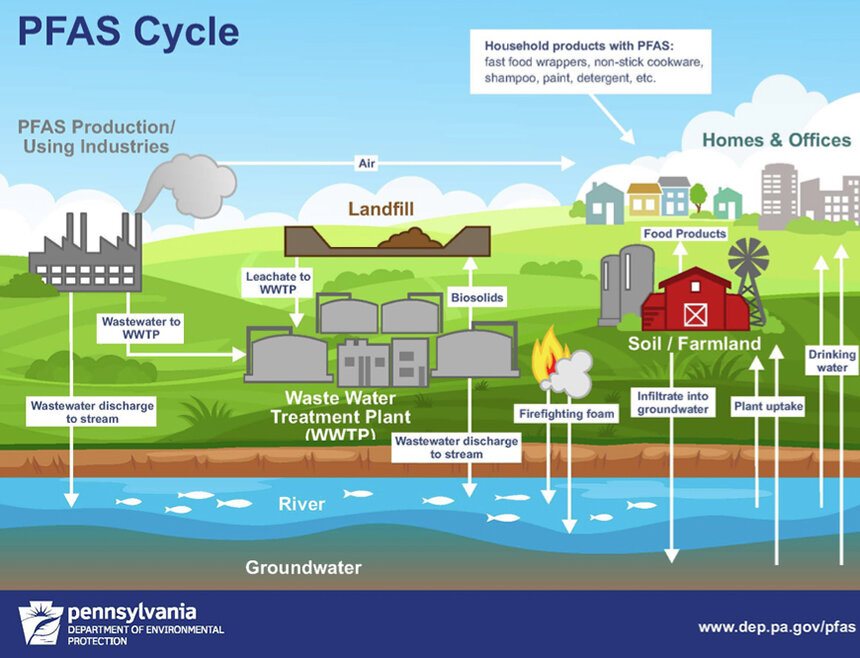New Stormwater Tunnel Will Have Storage Capacity of Nearly 60 Million Gallons
October 16, 2020
The final stage of the massive stormwater runoff and sewage collection and treatment project was set in motion, at least in concept, by the Coastal Resources Management Council (CRMC) at its Oct. 13 online meeting. Several issues need to be resolved, however, such as where to dispose of 800,000 tons of pulverized rock and sediment known as tunnel muck.
The Narragansett Bay Commission (NBC), Rhode Island’s largest wastewater treatment operation, manages the massive combined sewer overflow (CSO) system, which is credited with significant pollution reduction in upper Narragansett Bay.
CSO Phase III will divert, store, and treat up to 58.5 million gallons of stormwater and sewage from Central Falls and Pawtucket before it’s discharged into the Blackstone and Seekonk rivers.
A 2.2-mile, 30-foot-wide collection tunnel will run from Pawtucket to the NBC’s Bucklin Point wastewater treatment facility in East Providence. The tunnel will be dug at a depth of 150-200 feet along the rivers’ eastern shoreline.
The final plans have yet to be completed and submitted to CRMC, but the project will have a tunnel pump station, four drop shafts, and a tunnel odor-control facility. Two additional treatment clarifiers — to remove suspended solids — will be built at Bucklin Point.
Future exceptions and variances would require CRMC approval. NBC is reviewing tunnel muck disposal locations with the Rhode Island Department of Environmental Management.
Structures on nine properties, including homes, in East Providence and Pawtucket will be demolished to make way for construction.
The Pawtucket tunnel is expected to take five years to complete. Tunnel boring is scheduled to begin in two years. The project is the first of four segments for Phase III. Additional connections and segments will be completed through 2041. This work will include sewer connections, a smaller tunnel link, additional wastewater storage, and green stormwater infrastructure.
CSO Phase I, completed in 2008, treats 1.1 billion gallons of wastewater from Greater Providence that would otherwise flow into Narragansett Bay. Phase II, completed in 2014, diverts 17 outflows from discharging into the Seekonk and Woonasquatucket rivers. The wastewater now runs into the Phase I collection tunnel.
The $548 million Pawtucket tunnel project received a loan covering half the cost from the Environmental Protection Agency. The Rhode Island Clean Water State Revolving Fund and other programs will also finance a portion of the project costs.




$585 million to divert "up to" 58.5 million gallons of stormwater – in comparison to Phase 1 which diverted 1100 million gallons (that is the 1.1 billion g as reported) shows the diminishing returns that is bad news for NBC ratepayers who have already seen rates quadrupled. Loans don’t help, they have to be repaid.
This is very unfair: shouldering the burden of further cleaning up the Bay should also be shared by those who actually live by the Bay and get the full benefit without paying for it; also, while sewage (about20% of the flow during storms) is the responsibility of residents using toilets in the NBC area, the other 80% of stormwater is from impervious surfaces – roads, parking lots (such as at State Government, hospitals, shopping centers, colleges) used widely by people outside the NBC district, they help cause the problem but don’t pay for the tunnels to be built because the NBC collects on the basis of how much water you use. Thus a CVS with a vast parking lot causing the runoff pays on how much they use the toilet in the store! A fairer system would be if the NBC charged for impervious surfaces billing RIDOT for state roads, parking lot owner for their fair share. To add insult to ratepayers, the NBC charges a large fixed fee (about $20/month) in comparison to the actual water use charge (about $6 for me) meaning there is little incentive to conserve water. Plus they went from quarterly to monthly billing, thus tripling transaction costs. The whole system needs to be reformed before digging these tunnels!
The Phase I tunnel has a capacity of 65 million gallons. It has treated 1.1 billion gallons since it went online. So the Phase II tunnel has a similar capacity.
At one point, there was talk about making significant green infrastructure investments in Pawtucket and Central Falls to reduce costs compared to the tunnels that were constructed in Providence. I thought there was consensus that the cost-benefit analysis favored green over gray infrastructure. I wonder what changes that resulted in the decision to construct more tunnels instead of GI.